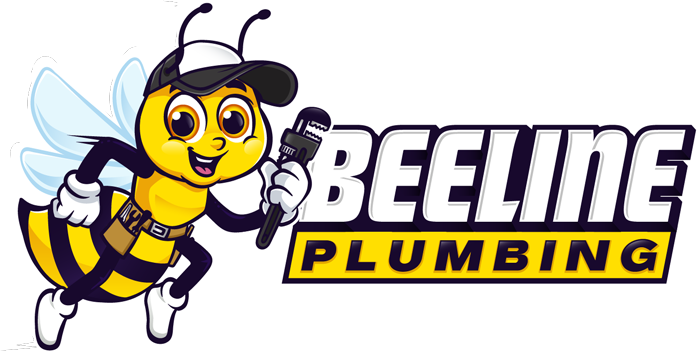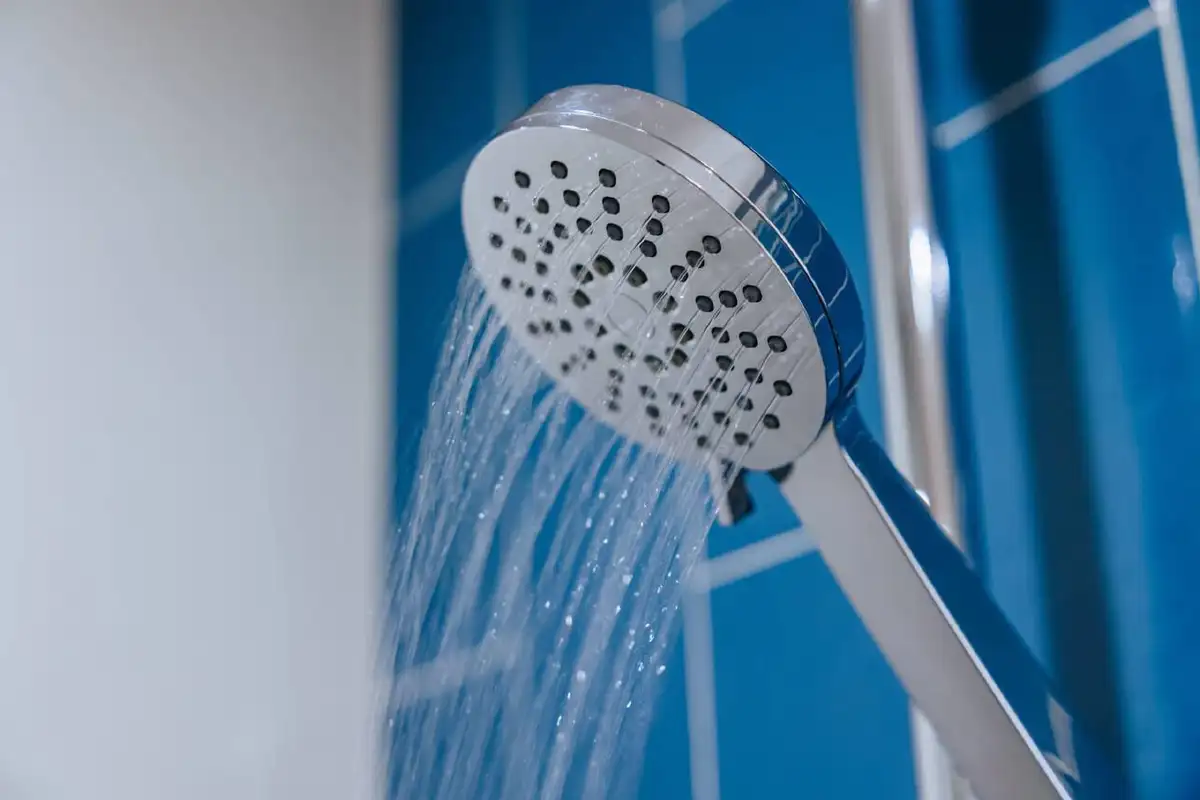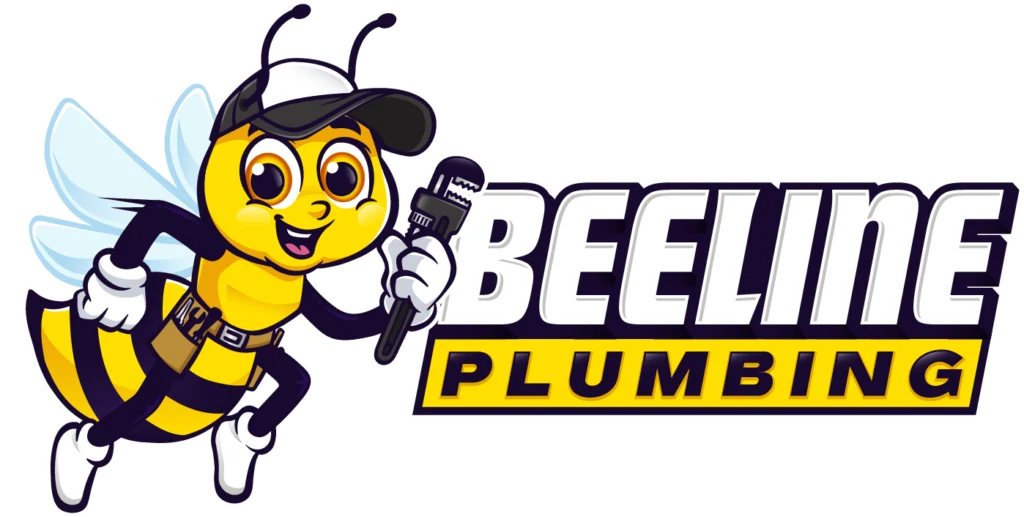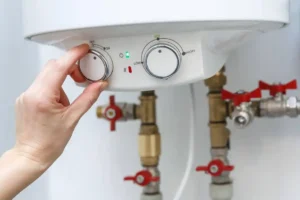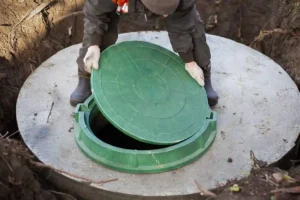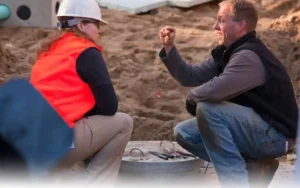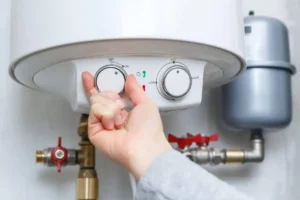Low water pressure in showers can be frustrating, especially when only one shower in your house has low pressure. This issue can affect your daily routine, making it harder to get a refreshing shower or clean your hair properly. Understanding the root causes of this problem is essential, and the good news is, there are simple fixes to improve the situation.
In some cases, low water pressure in shower but not sink is a sign that the issue is isolated to the showerhead or the plumbing in that specific area. If you experience low water pressure in shower and tub, it might point to a larger problem within the plumbing system that needs attention. Whether it’s a clogged showerhead, a malfunctioning valve, or an issue with the home’s water supply, we’ll explore the common causes and offer practical solutions to restore your shower’s pressure.
Why Is There Low Water Pressure in Just One Shower?
There are several potential causes for low water pressure in just one shower. One of the most common issues is a clogged showerhead. Over time, mineral deposits, like calcium, can accumulate inside the nozzle, reducing water flow. If your sink or other faucets have normal pressure, but the shower struggles, this could be the culprit. A simple cleaning of the showerhead can often resolve this issue.
Another reason might be a faulty valve or imbalanced shower system. Your plumbing system is designed to ensure equal pressure in all areas, but if the system is imbalanced or the shower valve isn’t working properly, it can cause a noticeable drop in pressure. Additionally, issues like corroded pipes or even a malfunctioning shower pressure regulator could be at play. These problems usually require the expertise of a professional plumber to fix effectively.
If you notice low water pressure in shower but not sink, it might also be an issue with the pipe feeding that specific shower. Low water pressure in shower and tub can indicate that there’s a blockage or partial obstruction in the pipes, reducing the flow of water.
Quick Fixes for Low Water Pressure in Showers
Before you call a plumber, there are a few quick fixes you can try to increase low water pressure in shower. First, clean the showerhead. Remove the head and soak it in a solution of vinegar and water for a few hours. This will help dissolve mineral deposits and restore water flow. After cleaning, reattach the showerhead and test the pressure.
If you suspect a clogged drain, try using a plunger for the shower drain. This can help dislodge any debris that may be obstructing the drain, improving water flow. If the problem persists, a deeper clog in the plumbing may be causing the issue, and you may need professional help to unclog shower drain thoroughly.
Another quick fix is to adjust the shower pressure regulator. If your home has one installed, it may be limiting the water flow. Adjusting the regulator can increase the water pressure without having to replace any parts.
For low hot water pressure in shower only, you may need to check the water heater. Sediment buildup in the water heater can reduce hot water pressure, and flushing the heater could solve the issue. If you’re unsure how to do this, it’s best to call a plumbing professional to ensure the process is done correctly.
Is It Your Shower or Plumbing?
If cleaning the showerhead and clearing the drain don’t improve the situation, it might be time to assess whether the problem lies with the shower fixture or the plumbing system. A balanced shower system ensures even pressure throughout your home’s plumbing. If the system is unbalanced, it can affect only one shower, leaving it with low water pressure while the rest of the home has normal flow.
Another possible cause is a malfunctioning shower valve. Shower valves control the flow of water to the showerhead, and if they’re not working correctly, they can limit water pressure. If you suspect a faulty valve, it’s important to have it inspected and replaced by a licensed plumber.
If the issue is with the plumbing itself, such as rusted or corroded pipes, it could be affecting water flow to just one shower. Over time, pipes can accumulate sediment, restricting the water’s ability to flow freely. Low water pressure in shower but not sink could be a sign that the shower’s supply pipe is partially blocked or corroded. This requires professional repair to restore the flow.
How to Clean Your Shower Head for Better Water Flow
If mineral buildup is the issue, cleaning your showerhead can significantly improve water flow. How to clean shower head: First, remove the showerhead and soak it in a mixture of equal parts vinegar and water for a few hours. This will break down the calcium deposits that commonly accumulate in showerheads. After soaking, use an old toothbrush to scrub away any remaining residue, paying special attention to the nozzles where the water flows out.
How to remove calcium from shower head: Vinegar is an effective solution for dissolving calcium deposits. If vinegar doesn’t fully remove the buildup, consider using a specialized calcium remover or descaling solution available at most hardware stores. Once the showerhead is clean, reinstall it, and check if the water pressure has improved.
This simple maintenance task can often restore normal pressure, but if the issue persists, it may be necessary to investigate other causes, such as blockages in the plumbing system or a faulty shower valve.
Unclogging a Shower Drain to Prevent Low Pressure
Sometimes, clogged shower drains can affect water pressure. If your shower is draining slowly or if you notice water pooling in the shower, it may be time to unclog shower drain. Use a plunger for shower drain to dislodge any hair or soap scum that could be obstructing the drain. If plunging doesn’t solve the problem, try using a drain snake or a natural drain cleaner.
You can also try using a plunger on a shower drain if you don’t have a drain snake. The plunger can create enough suction to break up smaller clogs. If these DIY methods don’t work, the clog might be further down in the pipes, in which case you’ll need professional help to unclog shower drain and restore proper water flow.
Clogs can reduce the pressure of water exiting the showerhead, especially if water backs up in the drain, causing the showerhead to sputter or weaken in flow. Regular maintenance and unclogging can prevent this issue and ensure smooth water pressure.
What Causes Low Hot Water Pressure in Showers?
If you’re dealing with low hot water pressure in shower only, the problem could be related to your water heater. Sediment buildup in the heater can block the flow of hot water, causing a noticeable reduction in pressure. To solve this issue, flush the water heater to remove any built-up sediment. If you’re unsure how to do this safely, it’s best to call a professional plumber.
A shower pressure regulator can also affect hot water pressure if it’s malfunctioning. In many homes, the pressure regulator is set too low, limiting the flow of both hot and cold water. A quick adjustment to the regulator can help balance the pressure, improving both cold and hot water flow.
If flushing the water heater and adjusting the pressure regulator don’t solve the issue, the problem may lie with the internal components of the shower valve or plumbing that serves hot water. In these cases, a plumber can diagnose the issue and restore proper hot water pressure.
What Happens When You Flush the Toilet While Showering?
If you’ve ever flushed the toilet while showering and noticed the water pressure drop, you’re not alone. When you flush the toilet, it creates a sudden demand for water, which can reduce pressure in other areas of the house. This happens because the plumbing system is shared, and when one appliance needs water, it can take away from others.
This issue is most common in older homes with outdated plumbing systems that can’t handle simultaneous water demands. The reduced pressure when you flush the toilet while showering can cause an uncomfortable shower experience, with water temperature fluctuations and a significant drop in flow.
The solution to this issue might be installing a shower pressure regulator or upgrading to a balanced shower system that can handle multiple water demands at once. These systems help ensure that water pressure remains consistent, even when multiple fixtures are in use.
When to Call a Plumber for Shower Repair
If DIY fixes like cleaning the showerhead, unclogging the drain, or adjusting the pressure regulator don’t solve your low water pressure problem, it’s time to call a professional plumber. Shower repair is necessary when issues with the plumbing system are causing water flow restrictions. If you notice no water pressure in shower but plenty everywhere else, this may indicate a problem with the pipes leading to the shower or the shower valve itself.
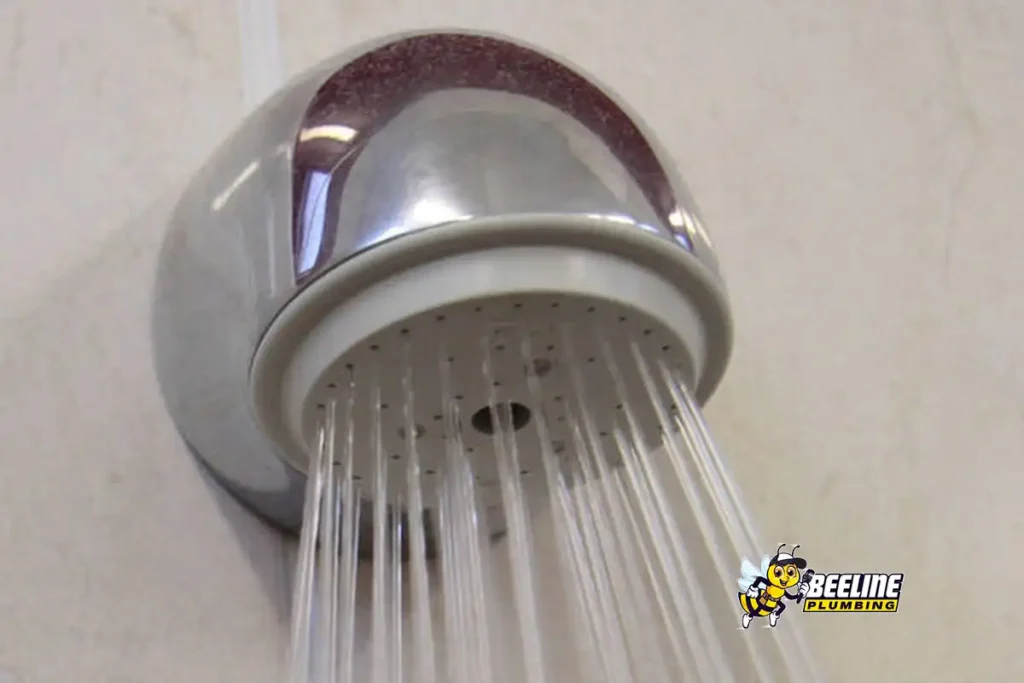
Beeline Plumbing expert plumbers can diagnose and repair issues with your plumbing system, including replacing malfunctioning shower valves. Don’t risk further damage by attempting to fix complex issues yourself – a licensed plumber from Beeline Plumbing will have the necessary tools and expertise to resolve your shower pressure issues safely and efficiently.
Preventive Tips for Maintaining Shower Pressure
Maintaining consistent water pressure in your shower involves regular upkeep. To prevent future issues with low pressure, consider scheduling routine plumbing inspections. A professional plumber can check your balanced shower system to ensure everything is functioning properly. Regularly clean your showerhead and drain to prevent clogs from forming.
It’s also a good idea to monitor the types of shower valves in your home. Over time, valves can wear out and cause pressure imbalances. Replacing old valves with newer, more efficient models can improve water flow.
For homes with older plumbing systems, upgrading the pipes may be necessary to restore optimal water pressure. Regular maintenance is key to preventing sudden drops in pressure and ensuring your shower continues to function at its best.
Dealing with low water pressure in only one shower can be a frustrating experience, but with the right approach, most issues can be resolved. Whether the cause is a clogged showerhead, a faulty valve, or issues with the plumbing system, there are several solutions to restore normal pressure. If you’ve tried DIY fixes and the problem persists, don’t hesitate to call a professional plumber. At Beeline Plumbing, we specialize in diagnosing and repairing shower pressure issues to get your plumbing back to normal. Contact us today to schedule an inspection or repair service.
Is your shower suffering from low water pressure? Let Beeline Plumbing take care of it! Our experienced plumbers can quickly diagnose the cause of your water pressure issues and provide effective, long-term solutions. Whether it’s cleaning your showerhead, repairing your shower valve, or fixing your plumbing system, we’re here to help. Contact us today for a consultation and enjoy a perfectly flowing shower once again!
